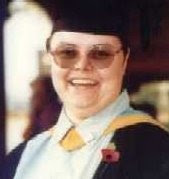The Chronicles of Prydain - Lloyd Alexander
Lloyd Alexander's five-books series, "The Chronicles of Prydain" consists of The Book of Three, The Black Cauldron
, The Castle of Llyr
, Taran Wanderer
and The High King
which follow the adventures of a young man named Taran, who is an Assistant Pig-Keeper at Caer Dallben, but dreams of one day being a great hero. His companions include Princess Eilonwy, Fflewddur Fflam the wandering bard and king, and the hairy creature called Gurgi.
The novels were inspired by Welsh mythology, in particular the stories of the Mabinogion. Prydain is in fact the Welsh for Britain. However, the stories are not merely retellings of those myths, a point Alexander himself makes clear in an author's note, as various characters have been changed, and some stories conflated, so a student of Welsh culture should be prepared for surprises; Arawn has been made into an enemy, and Gwydion has lost all of his negative characteristics. The Horned King has his roots in Herne the Hunter and Cernunnos, but in "The Chronicles of Prydain", the Horned King is thoroughly evil and Arawn's champion.
The series was published just a decade after Tolkien's The Lord of the Rings. and the first four books are fairly free of Tolkienian references (although Gurgi struck me as a more civilised, less anguished and far hairier version of Gollum. The final book, however, is astonishingly full of Tolkienian references. Princess Eilonwy is a mixture of Eowyn and Arwen (she dresses in men's clothing so that she can fight in a battle, she has sewn a banner for Taran featuring the oracular white pig, Hen Wen (the same pig to which Taran is an assistant keeper) and at the end of the book she gives up something in order to stay with Taran and marry him (I won't be explicit about just what she gives up). Taran and Eilonwy both have the opportunity to sail with many others to the "Summer Country" (which seems to be the Prydain equivalent of sailing into the West, except that here there will be no return for anyone).
Other Tolkienian references in The High King include a trip through some dwarf mines (which is abandoned and a mountain is crossed instead, in a neat reversal of events in The Fellowship of the Ring; the gates of King Math's home Caer Dathyl being battered with a large ram (and Math himself seems to resemble King Theoden whilst he was still in the clutches of Wormtongue); just as Aragorn sails up the Anduin to Minas Tirith, so too Gwydion sails to Arawn's stronghold - and Arawn bears some resemblance to Sauron; then there is the battle at Arawn's stronghold which resembles the "last stand" made by Aragorn and the Captains of the West outside the Mornannon - and the response of the Cauldron-Born to Taran's use of Dyrnwyn resembles the response of Sauron's many servants when the Ring is destroyed; and the gwythaints are akin to the Nazgul.
For all that, I enjoyed the series and can understand why it continues to be popular with children 40 years later.
For those who are interested in the author's own thoughts, there is a piece by Lloyd Alexander on Fantasy at the Children's Book Council website.


7 comments:
As a new reader/visitor to your blog, I'd first like to say how much I've been enjoying it so far . . . and I remember trying to read "The Chronicles of Prydain" as a teenager and thinking what a poor copy of Tolkien they were. I think I'll give them another try, though.
I have a quick question (and you may have already written about the following in a previous post) . . . are you familiar with Pamela Dean's Secret Country trilogy? I'd be interested to know what you think of it.
Hi Inkslinger - thanks for taking the time to read - and write (and thanks for the link on your Blog !)
I've not read anything by Pamela Dean - her books aren't held by the county library service here, and not even the Bodleian Library (which sometimes has American or other international fiction) has them.
That post on Alexander was well done.
Thanks.
Hello Martin ! Thanks very much for your comment.
Nice stuff, but I'm not sure you can chalk up the High King material as derivative. Most of the thematics you mention also resonate with the source material both used, don't they?
Well I don't know the Mabinogion to be able to comment on it as "source material". Tolkien, of course, used Norse myths as his "source material", so my comments about The High King are based on my (admittedly not very advanced) knowledge of Tolkien's original source material and of my very extensive knowledge of Tolkien's own books.
A very nice summation!
I feel The Chronicles of Prydain are one of the greatest fantasy series ever--especially considering how long ago they were written. How else could they inspire such efforts as this blog post, the (probably) upcoming Disney movie reboot, and kept sales so strong for so long?
My own homage takes a somewhat different approach. Although they are for a somewhat older and more modern audience, I let the series help inspire (while I figuratively leaned over backwards in an effort to avoid being derivative) the setting and tone for my own novels (The Forged Prince, The Torc of Tethera, and The Queen of Deceit), which are set in a land deriving from an ancient Prydein that utilizes many elements of the Mabinogion--probably Lloyd Alexander's biggest source of inspiration--as well as the almost inevitable young protagonist on his own hero's journey against terrifying odds.
-- Michael Laird
Post a Comment